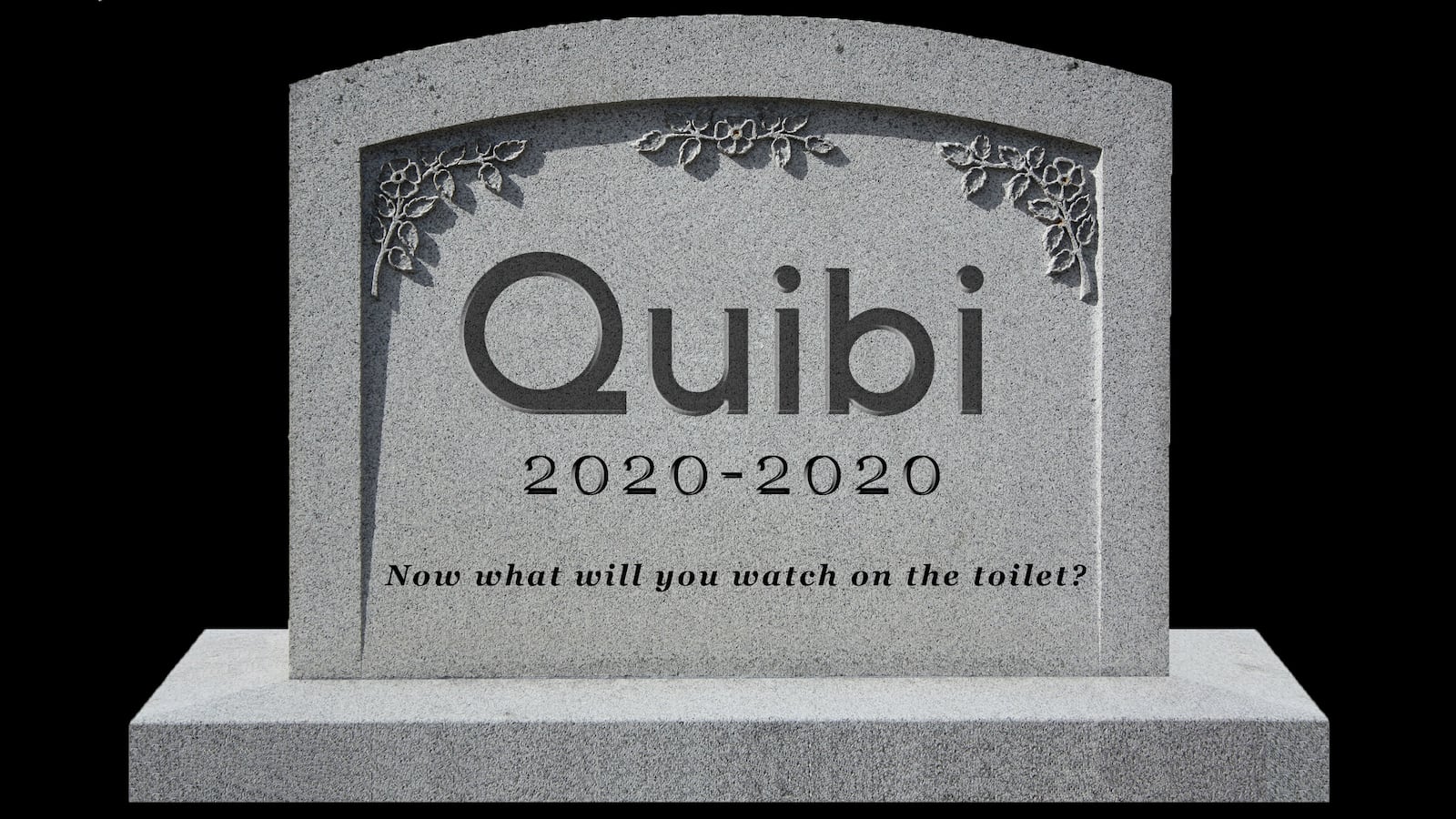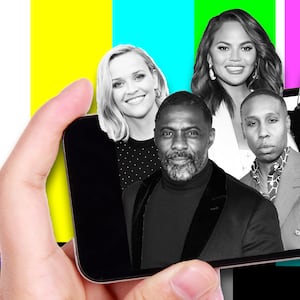Speaking with reporter Benjamin Wallace for a Vulture feature earlier this year, Quibi CEO Meg Whitman distilled the new streamer’s essence to just a few words: “Water, by the way, is free,” she said. “People pay for convenience and premium.”
“Premium” always appeared to be the unifying idea behind Quibi. Ahead of its launch the company raised $1.75 billion (billion!) all because of the brave and absurd assumption that we all want more from the videos we watch while catching a bus or taking a poo—and that, like, 5 to 10 percent of us would be willing to pay to upgrade that experience. (For those wondering how suitable Quibi’s shows are for on-the-can viewing, my colleague Kevin Fallon wrote an excellent review.)
Alas, tragedy has stricken a country full of potential streaming customers: Deadline reports that Whitman and Quibi founder Jeffrey Katzenberg have chosen to dissolve the “quick-bite” streaming service after just half a year—a process that itself could take months. (Whitman might not be out of a job for too long, though; in a distinctly “2020” twist, Joe Biden’s team is reportedly eyeing her for a Cabinet position.) The app was pitched to us as the future of entertainment—but its rise and fall has been primarily defined by schadenfreude.
Quibi inspired curiosity and consternation from the start. As Katzenberg—known for revitalizing Disney with Who Framed Roger Rabbit and The Little Mermaid and Aladdin before launching DreamWorks with Steven Spielberg—rallied interest and funding, the celebrity deals seemed to materialize overnight. Spielberg, Chrissy Teigen, Jason Blum, Sophie Turner, Lena Waithe, and countless others rushed to join projects designed to be watched on phones (horizontally or vertically) for ten-ish minutes at a time. All the while, skeptics wondered: Who is any of this for?
A cynic might argue that Quibi’s doom seemed inevitable from the start; it is, after all, an app for young “digital natives” designed by two sexagenarian billionaires whose cultural touchstones include Jane Fonda workout videos and the History channel series Grant. (Seriously.) And besides—on what planet did we need another video platform to entertain us as we wait in line for coffee or kill time on a park bench? In what universe would enough people pay $5 to $8 for that service?
The problems were never just philosophical. When Quibi launched, subscribers found out that the app didn’t allow the multi-tasking more established VOD players, like YouTube, have already made standard. So if you’re watching that Chrissy Teigen judge show, you have to really be watching it. The app also initially prevented subscribers from taking screenshots—effectively crushing any Quibi project’s best chance of getting talked about on Twitter. And that’s saying nothing of the patent infringement lawsuit from the interactive-video company Eko regarding the best part of Quibi’s interface: its seamless orientation-switching, which allows subscribers to watch shows in portrait or landscape mode.
And then came the cardinal issue with far too many nascent streaming services: The shows themselves were largely nothing to write home about. Save for the odd Emmy winner here or a campy Sam Raimi joint starring Rachel Brosnahan as a girl with a golden arm there, Quibi will likely be remembered, primarily, as a microcosm for 2020’s streaming apocalypse: So many platforms, so many shows, so many A-listers—and still, somehow, so little to watch.
In a recent essay, Vanity Fair TV critic Sonia Saraiya noted that streamers have adopted bloat as a convention—flooding an ever-growing number of streaming services with a deluge of series all produced at an increasingly frantic clip.
“What American TV production seems to be really good at is making mediocre filler,” Saraiya writes. “We live in a vast universe of mere ‘content’; it’s fine, but it exists primarily to take up space. The platform’s imperative is to fill hours with a diverse array of material. The business strategy is quantity. It’s still possible to make a great streaming show, but creators have to work against the platforms’ incentives, not with them.”
Quibi content, ironically, defies streaming’s greatest sin by keeping its offerings short or at least cutting them into discreet chunks. Some Quibi creators seem to have relished the challenge of punctuating their work in a new way; Guillermo del Toro seemed excited by the potential when speaking with Wallace. But the producers who made content for the service also reportedly retained rights to those projects—meaning they could stitch them together to run in longform on another service after a set number of years, should Quibi go under.
Still, there was probably some glimmer of the future in Quibi. At some point “premium” mobile-first entertainment could easily become a viable business model. Maybe these creators were just not the ones to bring it about—and either way, the timing was certainly off. (Not just because of the pandemic, as Katzenberg lamented in his disastrous New York Times interview this spring, either—although a Quibi spokesperson who was in the room for the conversation told Wallace he was joking.)
Quibi’s young user base, millennials, have less disposable income to spend on content that, increasingly, seems designed to exist rather than to enthrall. Many already have at least one, if not multiple, streaming subscriptions—for Netflix, or Hulu, or Amazon, or AppleTV+, or Disney+, or HBO Now, or Peacock. And yet somehow good television has paradoxically become more difficult to find.
In addition to the issues Saraiya highlights, there are the practical problems of actually using streaming services. Licensed content constantly shifts from one platform to another as rights change hands; user interfaces are often poorly designed; and even American programming itself appears to be declining in quality to support the ceaseless churn. Is it any wonder that potential Quibi users might’ve hesitated before signing up for yet another library of filler?
Quibi never gained any traction with people who had no financial stake in caring about it because it was not designed for them. But it did illuminate a gap that’s become increasingly difficult to ignore—between what industry titans are producing and what consumers actually want. And most importantly, I cannot overstate this, Quibi gave us Rachel Brosnahan’s golden arm along the way. Is it insane to say, borrowing a lyric from Quibi star and Pitch Perfect alum Anna Kendrick, that I’m gonna miss it when it’s gone?


